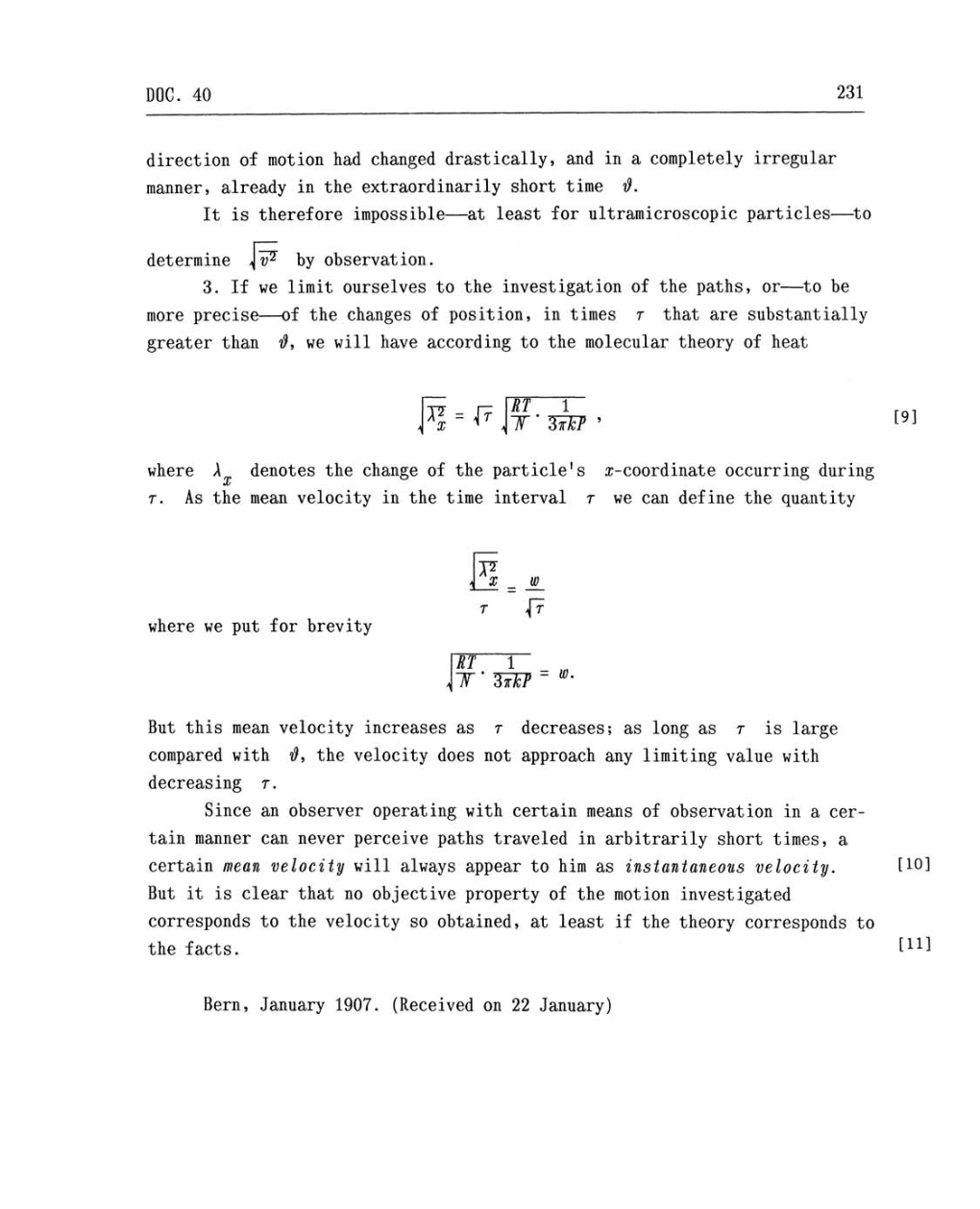DOC.
40
231
direction
of
motion had
changed
drastically,
and
in
a
completely
irregular
manner,
already
in
the extraordinarily short time d.
It is therefore
impossible-at
least for ultramicroscopic
particles-to
determine v2
by
observation.
3.
If
we
limit ourselves
to
the
investigation
of the paths,
or-to
be
more
precise-of
the
changes
of
position,
in times
r
that
are
substantially
greater
than
$,
we
will
have
according
to
the
molecular
theory
of heat
[9]
T7
_
rz
W
1
T'
3S7
'
where
yx
denotes the
change
of the
particle's
x-coordinate
occurring during
r.
As
the
mean
velocity
in the time interval
r
we can
define the
quantity
where
we
put
for brevity
*2
w
fr
RT
1
-w
But
this
mean
velocity increases
as r
decreases;
as
long
as r
is
large
compared
with
d,
the
velocity does not
approach any
limiting value with
decreasing
r.
Since
an
observer
operating
with
certain
means
of observation in
a cer-
tain
manner can never
perceive paths
traveled in arbitrarily short
times,
a
certain
mean
velocity
will
always
appear
to
him
as
instantaneous
velocity.
But
it is clear that
no
objective
property
of the
motion investigated
corresponds
to
the
velocity
so
obtained,
at
least if the
theory corresponds
to
the facts.
Bern, January 1907.
(Received
on
22 January)
[10]
[11]
